Although the internet has existed for decades, the original internet is incredibly simple compared to the complex ‘World Wide Web’ we have today. The original internet mostly served as a repository for information. Files were stored on local machines accessible only to those who knew the exact IP address and file path of the targeted content.
In contrast, today we don’t need to know file paths to find content online; search engines index a wide variety of content and we can pull up that content by searching with keywords.
How did the internet gain momentum? Over the course of several decades, key people, projects, and technological advances transformed the internet from a simple luxury to a complex tool we can’t live without.
Table of Contents
1965 – The term “hypertext” is coined

In the 1960s, Ted Nelson set out to create a digital repository system for worldwide electronic publishing that would do more than store documents for public access. A concept Nelson called ‘hypertext’ would maintain links to all versions of edited documents and links would remain intact even when files were moved. He called this Project Xanadu.
Although the Xanadu hypertext system was far more sophisticated than the hyperlinking system we use today, it never gained momentum. Instead, the World Wide Web project, introduced in 1989, became the standard.
Despite the failure of Project Xanadu, Nelson created an open source version of his project called OpenXanadu, which is available for anyone to download.
1969 – The U.S. military launches ARPAnet
After the cold war, the U.S. military needed a command control center that was impervious to nuclear attacks. To facilitate this need, the U.S. military launched a private network called Advanced Research Projects Agency global Network (ARPAnet). To make this computer network function, the military created the TCP IP protocol & transmission control protocol, which we still use today.
Computers at Stanford and UCLA connected through ARPAnet on October 29, 1969 and became the first computers to serve as hosts for the internet.
1969 — UNIX
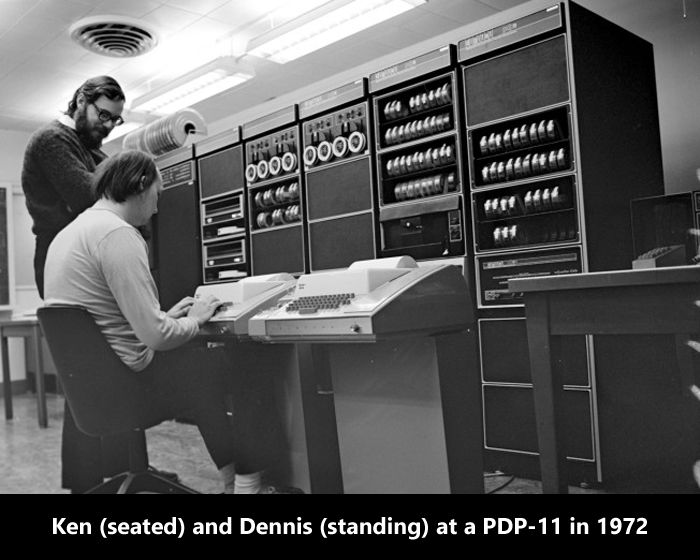
Source: https://web.uri.edu/cs/
According to the Computer History website, two programmers from AT&T Bell Labs developed UNIX on a spare PDP-7 minicomputer. The programmers, Kenneth Thompson and Dennis Ritchie, set out to create a time-sharing computer system that could support robust file sharing features.
A time-sharing computer science network system has a processor fast enough to manage several requests at once, allowing multiple users to interact almost simultaneously. Although standard today, time-sharing was a unique concept in the 1960s.
UNIX is considered the industry standard for web hosting servers and is revered in scientific communities.
Today, UNIX remains one of the most popular operating systems in the world. UNIX inspired Mac OS, Free BSD, and Linux.
1971 – Local and network-wide email
The internet wouldn’t be nearly as functional as it is today if it weren’t for email. We can thank Ray Tomlinson for that. Tomlinson was an engineer who worked for Bolt Beranek and Newman (BBN), the same company responsible for building ARPAnet.
Tomlinson’s electronic messaging system began as a local system, where people could leave messages for other users on the same computer. However, he later figured out how to use his file transfer internet protocol called CYPNET to send electronic messages to any computer connected to the ARPAnet network. The first email message sent across the ARPAnet network was “QWERTYUIOP.”
If you’re wondering why email addresses include the “@“ symbol, that’s because Tomlinson chose that symbol to separate usernames from their host computer. This symbol is now also used to separate usernames from domain names.
Email has evolved by leaps and bounds
Early email services required both the sender and recipient to be online at the same time. However, today’s mail servers send, relay, and store messages offline.
It’s hard to imagine having to coordinate a time to send someone an email in the 1970s. By the time you called to coordinate the event, you could just tell them the contents of your email!
Another interesting advancement in email happened in 1975 when John Vittal created the first emails client, which offered “Reply” and “Forward” functions. Back then, having those options available with a single click was a big deal.
1971 – Project Gutenberg & the e-book
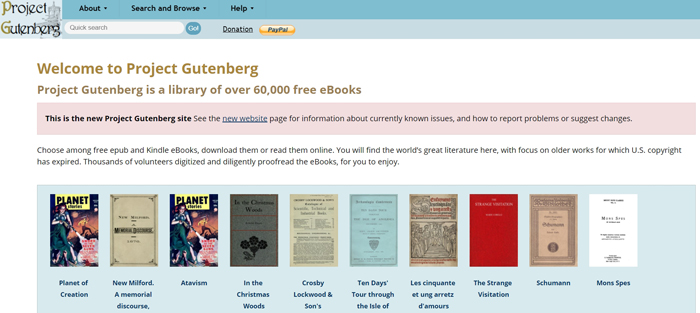
You can’t have the internet without the content people want to find on the internet packet switching technology. In the early day of the internet, people mostly wanted informative content. They wanted information and it was easier to distribute that information by way of books.
Project Gutenberg was spearheaded by a man named Michael Hart when he realized the future of the internet was literally the retrieval of information. Hart became committed to making books with expired copyrights available in electronic form, otherwise known as the e-book.
Today, there are similar book-preservation projects like Google Print and The Open Library. However, Google Print has been known to catalog copyrighted material and pages scanned by The Open Library project haven’t been cleaned up enough to make them easy to read.
1977 – The first automatic modem
Modems have an interesting internet history that really took off in 1977, when Dale Heatherington and Dennis Hayes created the 80-103A modem for home use. This modem made it possible for people to connect to the internet technology through the phone lines directly, rather than having to manually dial the phone.
Hayes constantly worked on increasing the data transfer speed of his modem and it took fourteen years to double the speed from 14.4kbps in 1980 to 28.9kbps in 1994. However, two years later, in 1996, a man named Brent Townshend invented the 56k modem.
1978 – The first form of social media: the Bulletin Board System (BBS)
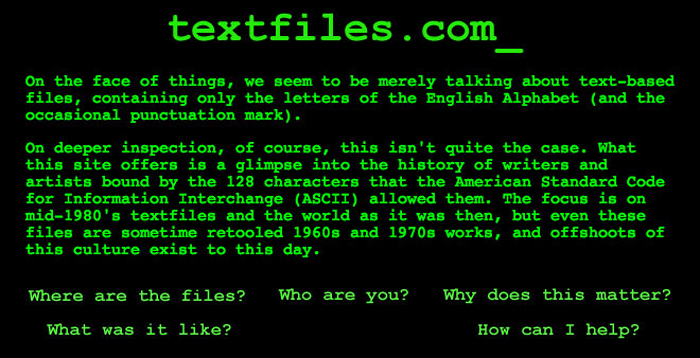
We definitely take social media for granted today because the first version of “social media” was a simple community called a “Bulletin Board System.”
Invented in 1978 by Ward Christensen and Randy Seuss, the first BBS facilitated public community conversations over the internet. Their invention was motivated by a major blizzard that prevented them from easily gathering in person.
People would use their modem for internet connectivity or connect to a BBS hosted on another person’s personal computer. Since the connection was through the phone line, most people only dialed into local BBSes to avoid paying for long distance.
Many people have fond memories of using BBSes in the 1980s until the internet came into being in the 1990s.
Prior to the first public BBS, the only community conversations were happening on ARPAnet, which was restricted to the U.S. military.
Today, there are still many active BBS communities scattered throughout the world. Other people have since created web-based versions of a BBS (you might remember the world-famous WBS chatrooms).
Although today’s social media is sophisticated, some people still prefer the simplicity of a web-based BBS over the complexities of social media.
1982 – The world’s first emoji
Back in the 1980s, smiley faces were just keyboard characters that looked like gobbeldygook to those not in the know. The first emoji was created in 1979 by Kevin MacKenzie, who represented a smiling face as: -). This wasn’t good enough for Scott Fahlman, who thought 🙂 was better. Technically, Fahlman was right. A smiley needs eyes and a nose to look right.
In the early days, they were called emoticons. Somewhere along the way these text-based expressions were called smileys and then emojis. Today, emojis are no longer just symbols, but graphical representations of each emotion.
1984 – The Domain Name System & Servers (DNS) are invented

Remember the last time you had to type in an IP addres to visit your favorite news website? If you grew up in the 1990s, you probably never had to use an IP addres to visit a website. You can thank Paul Mockapetris for this convenience.
Mockapetris created a way to mask an IP address with a domain name, which would be far easier to remember and type. DNS is a powerful tool our modern world can’t function without.
Besides content, domain names have become the currency of the internet and consequently domain name valuations and financing have become a needed service as more and more domains are registered.
1988 – The first successful live chat system: Internet Relay Chat (IRC)
While studying at the University of Oulu in Finland, a man named Jarkko Oilarinen created the IRC client and server with the intention of extending the capabilities of his BBS software. His goal was to host real-time discussions while maintaining popular BBS features.
The first IRC server was located at tolsun.oulu.fi and the first IRC computer networks was hosted on irc.cs.hut.fi. By 1989, there were 40 worldwide IRC servers and by 2000, European servers had 70,000 users and U.S. servers had 50,000 users.
1988 – The internet’s first malicious worm attack
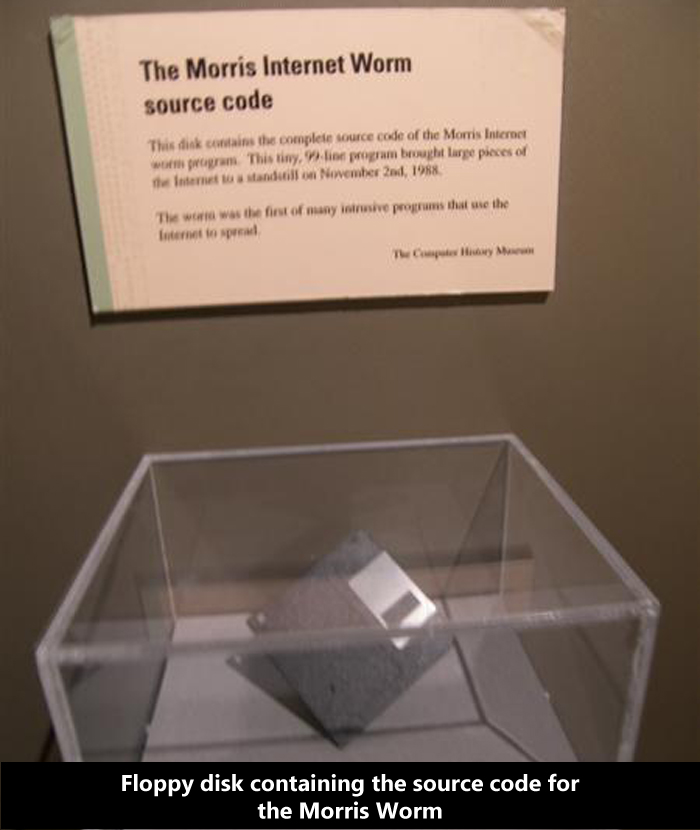
Launched from a computer at MIT, the “Morris Worm” halted the function of about 6,000 computers at the University of California at Berkeley and thousands more across additional colleges and research centers including NASA, John Hopkins, and the Lawrence Livermore National Laboratory. The worm was never meant to cause extensive damage, but that’s unfortunately what happened.
The worm didn’t kill any files, but nobody could figure out how to remove it. By the time the creator, Robert Morris, realized his prank had gotten out of control, it was too late. He sent out a message on the computer network to tell people how to remove the worm, but hardly anyone got that message because the worm had destroyed the local area networks or early networks. Ironically, it was a programming error that made the worm spread as far and wide as it did.
Morris was indicted in 1989 and a jury found him guilty. However, he was given 400 hours of community service in place of fines and jail time. Modern hackers would never be that lucky.
1989 – America Online (AOL) launches
Right before the World Wide Web exploded into existence, people connected to the internet through a semi-private Internet Service Provider (ISP) called AOL. The AOL software made it easier for people to connect with others through public and private chatrooms only available to other AOL users. In that sense, AOL was exclusive.
AOL users could create up to five (later seven) screen names on one account to use in the chatrooms and those screen names were automatically given an @aol.com email address.
1989-1991 – The World Wide Web is launched
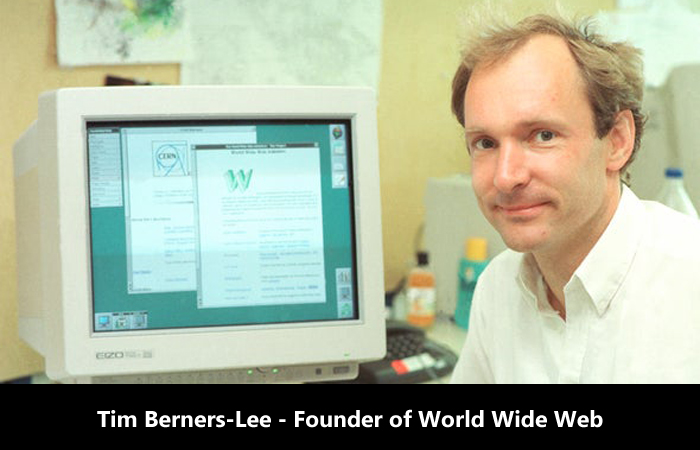
Between 1989-1991, a team of programmers, including Tim Berners-Lee, invented the framework for the World Wide Web, also known as “W3” for short. The team developed the HyperText Transfer internet Protocol (HTTP), Universal Resource Locators (URLs), and Hypertext Markup Language (HTML).
If you want to get technical, the theory of hypertext was proposed by Vannevar Bush in a paper he wrote in 1939. His paper, titled As We May Think, was published in the Atlantic Monthly in 1945.
The official proposal for creating the World Wide Web was published in MacWorld in March 1990 in order to persuade CERN they needed a hypertext system to thrive.
Little known fact: the project was originally called “Mesh,” but was renamed to the World Wide Web in 1990.
1991 – The first webpage was published
The first webpage ever published on the World Wide Web (W3) was a simple explanation describing what the W3 was all about. The page included hyperlinks to other webpages with more information about the history or history of the internet of the W3 project.
1991 – The Gopher protocol is launched
Before search engines like Yahoo! and Google, there was Gopher. Gopher was created by several programmers working for the University of Minnesota. The team was tasked to come up with a campus-wide system to distribute and retrieve information using mainframe computers. However, the programming rebels created a lightweight system using personal computers instead.
Gopher was a client or server directory system for searching file contents in addition to file names. Using a Gopher client to search would pull up a menu of links related to your search with files across FTP sites, telnet applications, and additional Gopher servers.
Little known fact: the Gopher protocol was named after the university’s mascot, the Golden Gophers. However, it’s also a reference to the homonym ‘gofer,’ which is a person who fetches things for other people.
1993 – The first graphical web browser called Mosaic is launched
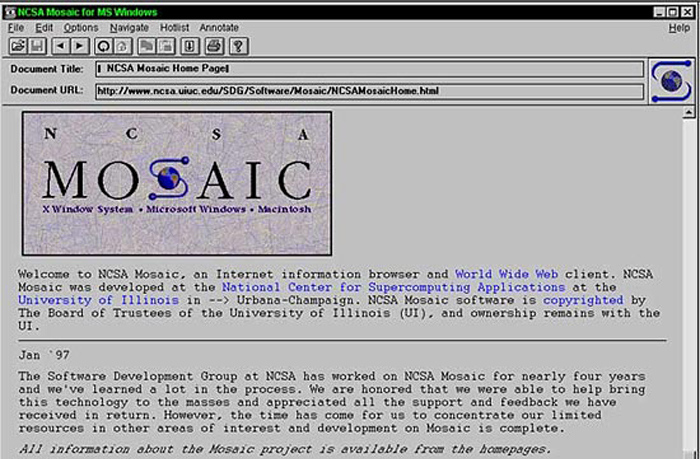
Prior to Mosaic, only tech savvy people could access the internet. In 1992, a team of developers at the University of Illinois at Urbana-Champaign sought to make the web easier to access and by 1993, Mosaic had launched.
Mosaic made searching the internet easy for people with limited computer skills. Mosaic basically made the internet look good with graphics and multimedia on the same page.
Unfortunately for Mosaic, Netscape Navigator took over the ‘net in 1995 and by 1997, Mosaic was gone.
1994 – The W3C is formed to set standards for the web
In 1994, Tim Berners-Lee left CERN and created the World Wide Web Consortium (W3C) to set technical standards for the internet including standards for writing HTML and CSS. This would later lead to internet blogging.
Today, web developers can check their HTML and CSS against these standards right online through the W3C Markup Validation Service.
1994 – Netscape Navigator rules the internet
You’ll be hard-pressed to find many Netscape fans today, but in the 1990s, Netscape Navigator was the most popular browser around.
1995 – Geocities is born
As the internet gained popularity, more people wanted to build their own website. Geocities made it possible for everyone to have a “home page” without knowing how to write HTML. Geocities survived a long time, officially closing shop in 2009. However, you can find some Geocities archives on https://archive.org/web/geocities.php
Geocities and other similar websites laid the foundation or national science foundation for today’s advanced website creators like Wix and Weebly.
1998 – Google goes live
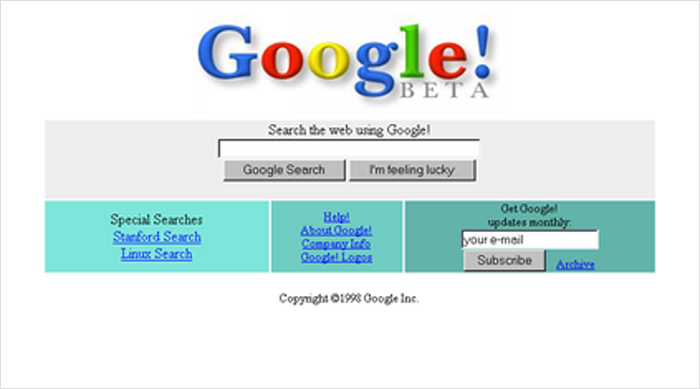
Although Yahoo! already existed, Google launched in 1998 and went on to become the #1 search engine in the world. Google was initially called “Backrub” because it calculated the number of backlinks a web pages had to determine ranking.
Although Google’s algorithms are much more sophisticated today, link building remains the number one SEO strategy.
2003 – Voice over IP phone calls enter the scene via Skype
Nothing changed both the internet and telephone communication systems like Voice over IP (VoIP). In 2003, Skype made it possible for people all over the world to connect via voice calls over the internet, bypassing the need to pay their phone company for long distance charges.
Skype revolutionized voice calls and paved the way for other companies to offer VoIP phone services, including Vonage.
2003 – Myspace takes over the internet
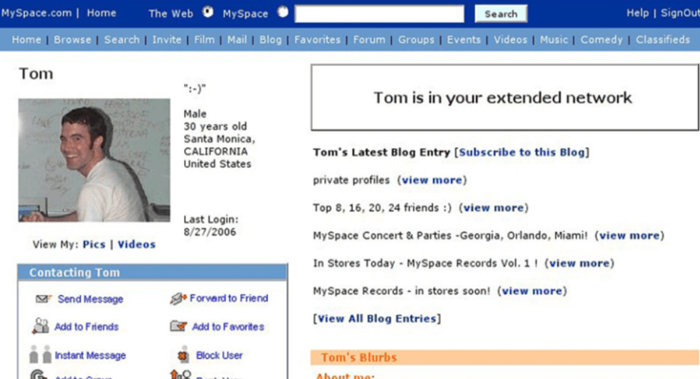
Myspace wasn’t the only social media network in 1993, but it became the most popular network. Part of the reason people flocked to Myspace was because Friendster was cracking down on fake profiles and people who wanted to create profiles for their pets. Myspace took a different approach and allowed people the freedom to create any profile they wanted.
Of course, we all know Facebook won in the end and somehow got people to be okay with using their real names. That one’s still a mystery.
2004 – The Google search engine gets personal
In 2004, Google launched a beta version of their personalized search system that stored a cookie in a user’s browser that would deliver personalized results based on what websites were visited from that particular browser. At this time, personalized results were not connected to a Google account.
In 2005, personalized search was integrated into the search algorithm as a standard and became the default for users logged into a Google account.
2005 – YouTube transforms video hosting and streaming
In 2005, YouTube made it possible for everyone with a camera and a microphone to publish video content to the masses. This was a big deal because content creators could use YouTube to host video content (or audio content with an image) without worrying about eating up bandwidth on their own website.
2007 – The iPhone makes mobile web browsing easy
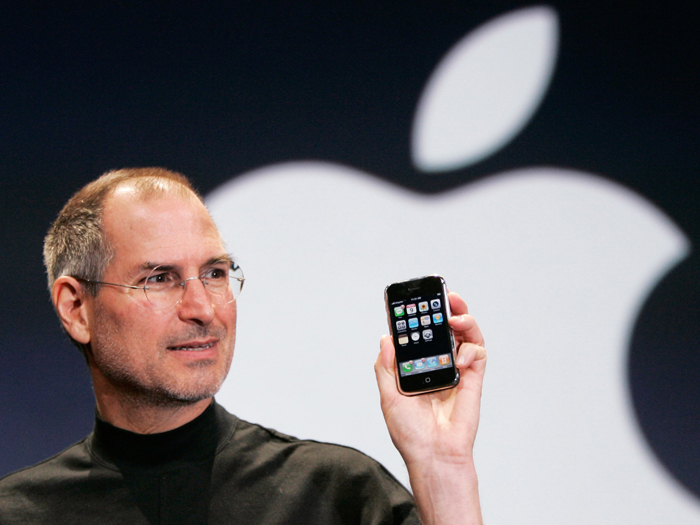
Prior to 2007, it was possible to view webpages from a mobile phone, but it wasn’t a good experience. There was no graphical interface, and most webpages didn’t display well enough to navigate.
Apple changed everything in 2007 when it launched the first iPhone that essentially combined a cellphone and computer into one device. Browsing the internet on the first iPhone was a substantially elevated experience in terms of quality and ease of use.
Back then, people created scaled-down, simple versions of their website for mobile devices because those devices couldn’t accommodate browsing a full site. Today, browsing the internet on a mobile device looks and feels the same as using a desktop computer, provided the website is optimized for both.
Considering most people browse the internet from a mobile device as their sole means of accessing the internet, it’s crucial to optimize your website for mobile search.
2014 – Cloud computing becomes the standard
Although the concept of “cloud computing” has been around since it was coined in 1997, it wasn’t popular until 2014. In 2014, 51% of all workloads were being processed in the cloud. This included cloud hosting from services like Amazon.
It was at this time that cloud hosting started becoming the standard for businesses, including web hosting companies. Cloud hosting makes massive resources available through multiple servers that act as a safeguard in case one of the servers goes down. With traditional web hosting, if the single server goes down, all websites hosted on that server go down.
What’s next for the internet?
Major advances have slowed down, but there’s still plenty of room for improvement, especially where cybersecurity is concerned. Nobody really knows what’s coming next, but Google’s ex-CEO Eric Schmidt predicts that China will create it’s own version of the internet, apart from just search engine Baidu, entirely separate from the rest of the internet by 2028.
While it’s possible that we may see various versions of the internet pop up in countries that want to control information, we can also expect to see advances that support the growing number of businesses moving online.
Just in 2020 alone, thousands of businesses have moved to an online format for the first time. It’s only a matter of time before these business owners run into problems that other business owners have just accepted as par for the course. No doubt, once these issues are discovered, there will be more genius programmers working on solutions to make the internet a better, smoother place for all.
Need help with your internet marketing? We’re the leading SEO company to help you. Our internet marketing services for direct clients or our white label digital marketing services for other marketing agencies looking to scale up their efforts.
Tim holds expertise in building and scaling sales operations, helping companies increase revenue efficiency and drive growth from websites and sales teams.
When he's not working, Tim enjoys playing a few rounds of disc golf, running, and spending time with his wife and family on the beach...preferably in Hawaii.
Over the years he's written for publications like Forbes, Entrepreneur, Marketing Land, Search Engine Journal, ReadWrite and other highly respected online publications. Connect with Tim on Linkedin & Twitter.
- Fixing Google Penalties: How to Recover From Any Google Penalty - July 25, 2024
- Why Isn’t My Business Showing Up in Google Local Search? - July 16, 2024
- How to Find Guest Blogging Opportunities - July 6, 2024



